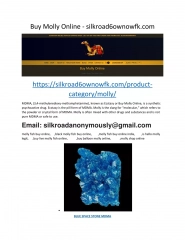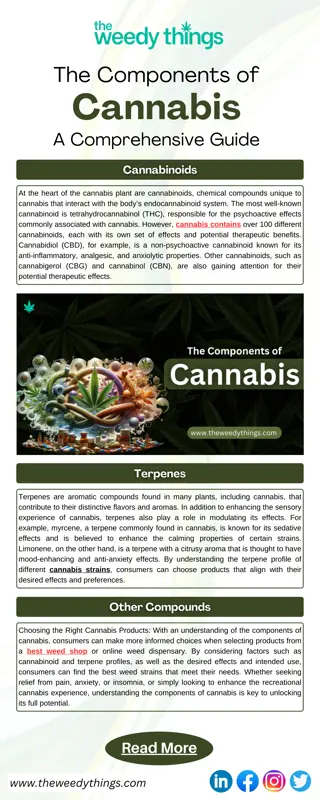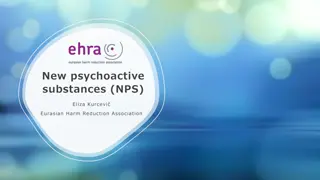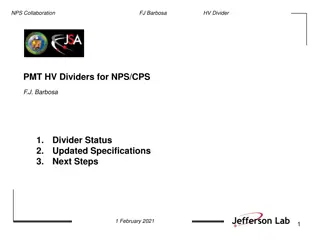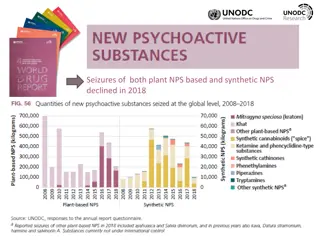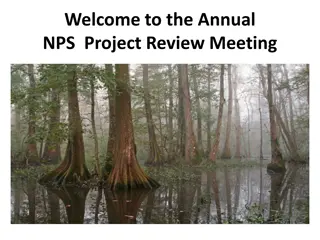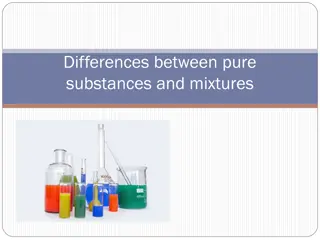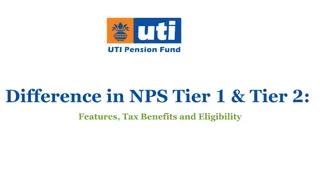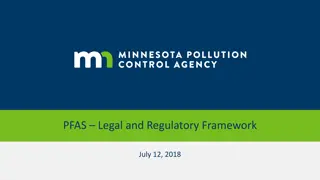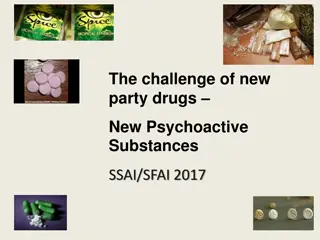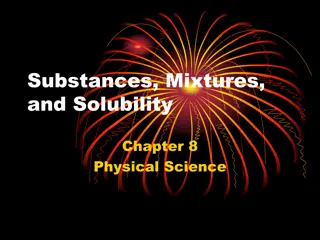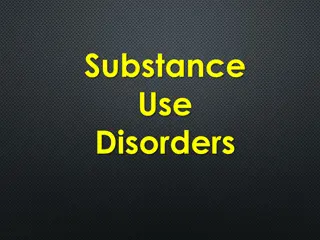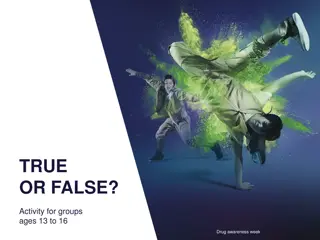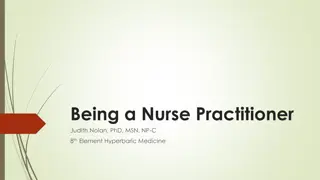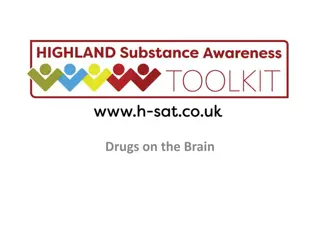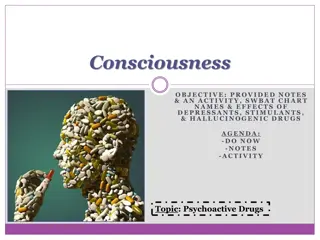Understanding Novel Psychoactive Substances (NPS) and Associated Challenges
Explore the clinical experience of NPS, including confusing terminology and challenges in toxicology and identification. Learn about the varied clinical presentations, local demographics of users, and specific examples like synthetic cannabinoids and benzodiazepines. Delve into the effects of NPS such as Ketamine and the risks they pose to public health.
Download Presentation

Please find below an Image/Link to download the presentation.
The content on the website is provided AS IS for your information and personal use only. It may not be sold, licensed, or shared on other websites without obtaining consent from the author. Download presentation by click this link. If you encounter any issues during the download, it is possible that the publisher has removed the file from their server.
E N D
Presentation Transcript
Clinical Experience of NPS Dr Richard Stevenson
NPS Background Confusing terminology Designer Drugs Bath Salts Legal Highs Psychoactive drugs, newly available in the UK, which are not prohibited by the United Nations Drug Conventions but which may pose a public health threat comparable to that posed by substances listed in these conventions
Challenges Unknown toxicology Mechanism of action Duration of action Metabolism Interactions (including prescription drugs) Short term & long term harms Identification of use Self reporting Post-mortem toxicology Role of urine toxicology screens
Clinical Presentations Concern over health Extended duration of symptoms Abnormal behaviours Mild abnormalities Drug induced psychoses Acute behavioural disturbance Acute drug toxicity Harm associated with intoxication Consequences of method of drug use
Local Demographics Ages from 12 to 50 Equal sex distribution Depends on the substance Often from private dwellings Polysubstance use is markedly prevalent Alcohol +++ Often take it because its there Intention to get mad wi it
Synthetic Cannabinoids Sold openly from head shops Annihilation, Psy-clone, Clockwork Orange, Damnation, Exodus etc Potent endogenous cannabinoid receptor agonists Repeat presentations Commonly smoked, ? vaping http://choicesforlifeonline.org/media/11284/annihilation_news_image.jpg Often present with Nausea +++ Collapse Catatonia, coma Drug induced psychosis
Benzodiazepines Phenzepam, etizolam, diclazepam 1mg = 10mg diazepam May or may not be detected on urine drug screens Increasingly responsible for presumed opiate toxicity Recent study from Abertay Uni & Police Scotland street blues found to contain from 8mg to 48mg diazepam Phenazepam & etizolam detected
Ketamine Mimics & Hallucinogens Methoxetamine, 3-MePCP, methoxphenidine Induce dissociation NMDA receptor antagonists Prolonged duration of action Cerebellar signs N-BOMe, DOC Sold on blotters (like LSD) 20 hour duration of action Drug induced psychosis and threat to life behaviours
Ecstasy Mimics BZP, PMA/PMMA, Benzo Fury, AMT, MDAI Often sold as Ecstasy, or legal equivalents (most now illegal) Mimic the empathogenic effect Potent inducers of serotonin toxicity
Summary NPS are here to stay Responsible for increasing presentations Clinically challenging White powders dangerous! Mental health implications for young people Perceptions need changed!


